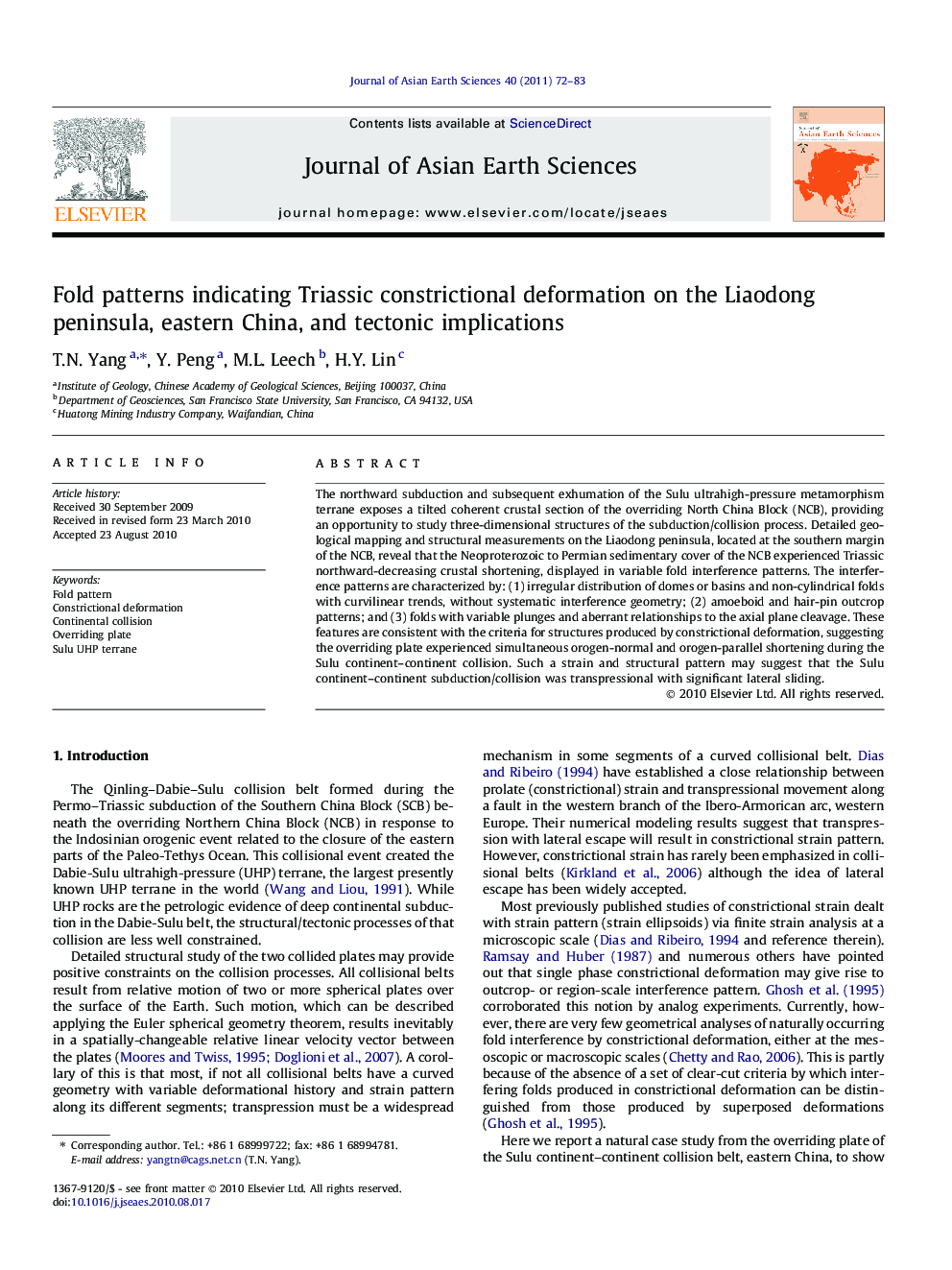| کد مقاله | کد نشریه | سال انتشار | مقاله انگلیسی | نسخه تمام متن |
|---|---|---|---|---|
| 4731782 | 1356822 | 2011 | 12 صفحه PDF | دانلود رایگان |

The northward subduction and subsequent exhumation of the Sulu ultrahigh-pressure metamorphism terrane exposes a tilted coherent crustal section of the overriding North China Block (NCB), providing an opportunity to study three-dimensional structures of the subduction/collision process. Detailed geological mapping and structural measurements on the Liaodong peninsula, located at the southern margin of the NCB, reveal that the Neoproterozoic to Permian sedimentary cover of the NCB experienced Triassic northward-decreasing crustal shortening, displayed in variable fold interference patterns. The interference patterns are characterized by: (1) irregular distribution of domes or basins and non-cylindrical folds with curvilinear trends, without systematic interference geometry; (2) amoeboid and hair-pin outcrop patterns; and (3) folds with variable plunges and aberrant relationships to the axial plane cleavage. These features are consistent with the criteria for structures produced by constrictional deformation, suggesting the overriding plate experienced simultaneous orogen-normal and orogen-parallel shortening during the Sulu continent–continent collision. Such a strain and structural pattern may suggest that the Sulu continent–continent subduction/collision was transpressional with significant lateral sliding.
Research highlights
► Liaodong peninsula structures show crustal shortening decreases northward.
► The overriding plate in the Sulu collision experienced constrictional deformation.
► Constrictional deformation leads to region-scale fold interference patterns.
► Liaodong fold interference patterns record a transpressional Triassic collision.
Journal: Journal of Asian Earth Sciences - Volume 40, Issue 1, 4 January 2011, Pages 72–83